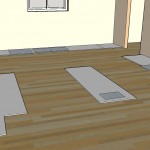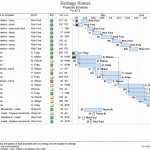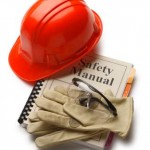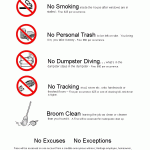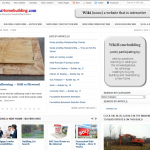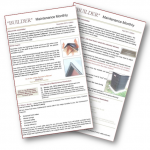Performance Standard: HBR articles 4-1 to 4-9, 5-1 Click icon to view book 
All beams, joists, rafters, headers, and other structural members shall be sized, and fasteners spaced, according to the National Forest Products Association span tables, or local building codes.
Warranty period: 1 year
Bowed stud – Builder will correct wall studs with greater than 1/2 inch bowing in a 32-inch distance, measured parallel to the stud.
THIS REPAIR DOES NOT INCLUDE REPAINTING OR REPLACEMENT OF WALLPAPER, WALL OR FLOOR COVERING UNLESS NOTED FOR CORRECTION ON THE FINAL INSPECTION BEFORE POSSESSION FORM.
The homeowner should wait until just prior to the end of the warranty period to request a correction. This will allow for normal contraction and/or expansion, which may correct the condition.
Warranty period: 1 year
Crowned floor joists/depression of floor joists – Builder shall correct floor joists with greater than 3/8 inch crowning or depression in a 32-inch distance, measured parallel to the joist.
Warranty period: 1 year
Squeaks caused by a loose sub floor are unavoidable, and totally squeak-proof floors cannot be guaranteed. The builder will refasten any loose sub floor to attempt to eliminate squeaking in carpeted areas only, to the extent possible within reasonable repair capability without removing installed mechanical systems or floor and ceiling finishes.
Warranty period: 1 year
Notes
Squeaky or Bouncy Floors – Generally, these will appear and disappear with changes in weather conditions. Floors without squeaks cannot be guaranteed. Although Heritage Homes does not warrant against floor squeaks, a reasonable effort may be attempted to correct them. Bouncy floor are usually caused by normal deflection.
Truss Uplift – The trusses on your home are engineered in accordance with the Truss Plate Institute (TPI), which is the accepted standard of New York State. A direct result of today’s highly energy-efficient home is Truss Uplift. This condition is caused by a number of inter-related factors: Vapor barriers in ceilings, heavy insulation and well-vented attic areas. With the bottom cord buried in 10” to 13” insulation, the moisture is not allowed to enter or escape as freely as it does in the top cord. The result being the top cord moves and the bottom cord does not, therefore, arching may occur. This may further cause drywall to crack between wall and ceiling. Truss uplift and its results are not covered under the limited warranty.
The cracking will often show up as a separation between the wall and the ceiling. The separation will be wider in the winter and may close completely in the summer. The cycle may also repeat year after year. Repairing the separation with joint compound may be less effective than caulking.
Repair of truss uplift separations is not included in the one year drywall coverage.
Homeowner Operation and Maintenance
You should try to maintain an even and reasonable temperature and humidity level in the house.
BUILDER Limited Warranty Guidelines
BUILDER will correct items not meeting the performance standard, only during the warranty period.

